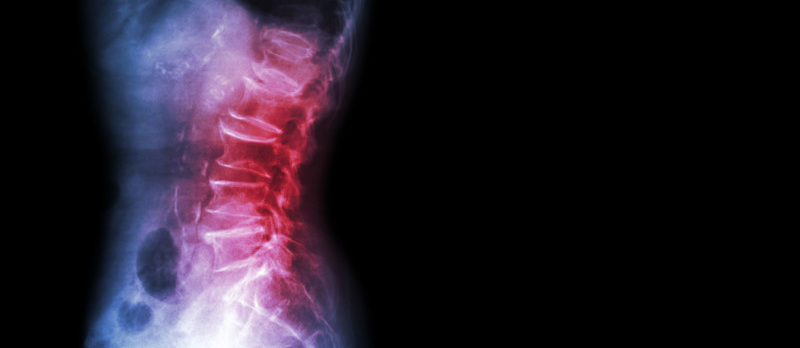The Differences Between X-Ray, MRI & CT Scans For Spine Pain
Category: Spine Pain | Author: Stefano Sinicropi

Doctors and surgeons have numerous tools at their disposal to aid in the diagnosis stage of patient evaluation. Sometimes all it takes is a physical exam and an understanding of the patient’s medical history, while other times more advanced techniques are needed. Three diagnostic techniques that are often utilized when assessing spine pain are the X-ray, MRI and CT scan. Today, we explain why doctors would use each imaging technique when diagnosing back pain.
X-rays
X-rays are probably the most common diagnostic imaging technique. An x-ray uses radiation to produce images of dense objects inside the body. X-rays allow doctors to see the bones and vertebrae in your spine, which allows them to look for disc degeneration, fractures and abnormal curvature of the spine. Even if the doctor suspects that you may be suffering from a soft tissue injury in your spine, they still may order an x-ray to ensure there isn’t any underlying damage to the bone.
MRI
MRI stands for magnetic resonance imaging, and it uses a powerful magnet and radio waves to create highly-detailed cross-section images of bones and tissues inside the body. One benefit of an MRI is that it does not involve radiation like an X-ray or CT scan. Instead, the machine creates a magnetic field around the patient and sends radio waves into the area of the body being examined. The radio waves cause the tissues in the body to resonate, and these vibrations are translated into a comprehensive 2D image through the use of a special computer program. MRIs are often used to diagnose bone and joint issues, as well as ligament damage and herniation of spinal discs.
CT Scan
A CT scan stands for a computed tomography scan, and it shares similarities with both an X-ray and an MRI. The CT scan is one of the most sophisticated diagnostic tools doctors have at their disposal, as it provides them with a 360-degree image of the spine, vertebrae and internal organs. It provides higher quality images than an X-ray, and can be used to diagnose a variety of health conditions. During a CT scan, a patient lies on a table inside of a tunnel and a scanner rotates around the patient, capturing a 3D image of their internal structures. It is more expensive than an X-ray, and not always available at small clinics.